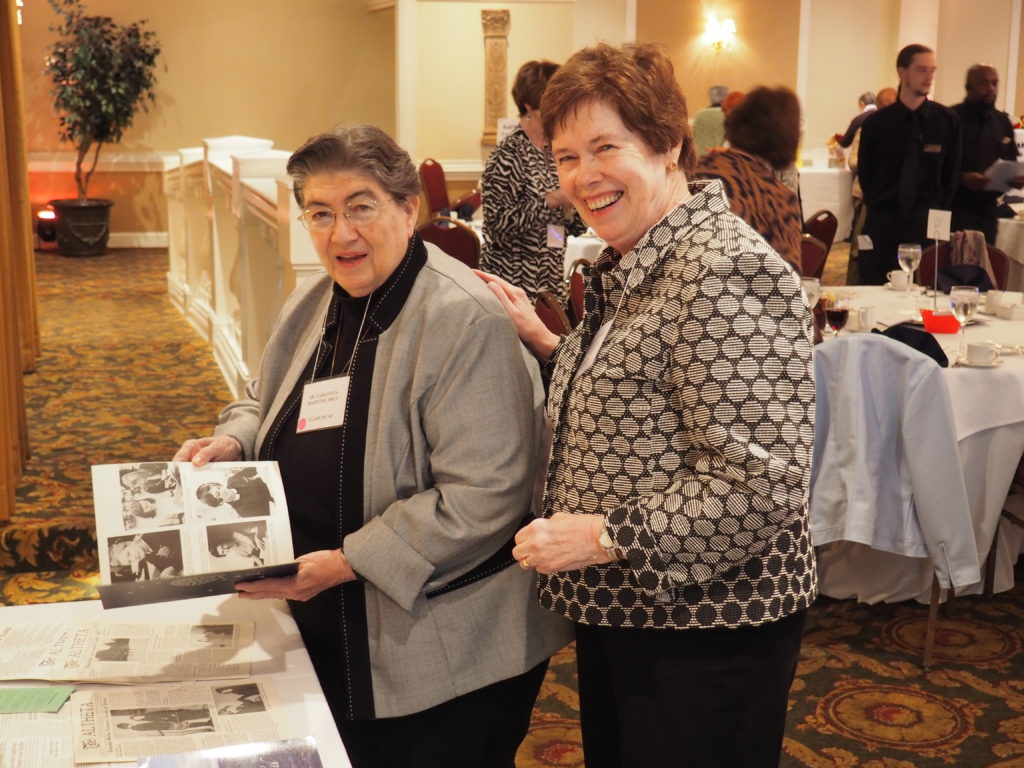February 17, 2017
This is the first in a series of articles written by Carlotta Bartone, SHCJ, for Our Cornelia. Sister Carlotta presents an overview of the canonization process from early Christian times to the present. She shares the journey of the Society of the Holy Child Jesus to promote the cause of Cornelia Connelly, Founder of the Society, for beatification and eventual canonization, and where this effort stands today. Her “On the Road to Canonization: The Cause of Cornelia Connelly” explains the canonization process as it pertains to Cornelia’s life and the Society’s hope that one day, she will be recognized as a Saint.
By Carlotta Bartone, SHCJ

Within the past few months, the Roman Catholic Church recognized as a Saint Mother Teresa of Calcutta.
What does it mean to achieve such status, and how does one become a saint?
In the first years after the death of Christ, his followers were being persecuted for their faith. Those who were willing to suffer martyrdom rather than deny their faith were considered saints and venerated as such. As time went on, the making of saints was a spontaneous act of the local Christian community, and those who lived holy and exemplary lives were acclaimed as saints. In the Middle Ages, the names of the founders of religious orders, both men and women, were added to the list. By their vows of poverty, chastity, and obedience, they were considered confessors, as opposed to martyrs, and they were typified according to their sex and state of life. Men were bishops, priests, or monks; women were virgins or widows.
By the fifth to the tenth century, bishops assumed greater control over the process, and insisted that petitioners provide them with written accounts of the candidate’s life, virtues and death, and especially of any purported miracles.
At times it was found that some who had been acclaimed as saints were not truly worthy of the title, so that by the 12th century the Church gradually developed a legal process of investigation into the lives of candidates for sainthood. Witnesses were called and evidence was gathered in an effort to determine whether the candidate’s reputation for holiness was deserved. From the late 12th century onward, the papacy required posthumous miracles as signs from God, especially for non-martyrs, confirming the candidate’s reputation for holiness and proof of heroic Christian virtue.
What has this to do with Cornelia?
After Cornelia’s death in 1879, the second mother general of the Society of the Holy Child Jesus asked one of the Sisters to collect all her writings, evidently with a view to eventually writing a biography of Cornelia and possibly introducing her cause for beatification. The same mother general later asked the Sister to destroy all the writings. Fortunately, on the advice of her confessor, the Sister disobeyed the order, but the first biography of Cornelia was not published until 1922. Finally the General Chapter, which is the governing body of a religious congregation, decided in 1924 to formally introduce the Cause for beatification of Cornelia Connelly.
A second biography in French was produced in 1930, and this was then translated into Italian. The priest who was consulted about the possibility of introducing the Cause was not encouraging, and it was only in 1946, on the occasion of the Centenary of the Society, that the General Chapter established a commission to promote the Cause.


Am glad to here that the cause for the Canonization of Mother Cornelia is being re-visited. Thank you Carlotta for a good start. May Holy Child Jesus give you courage and wisdom for more work ahead.
Valuable resource. Thanks.